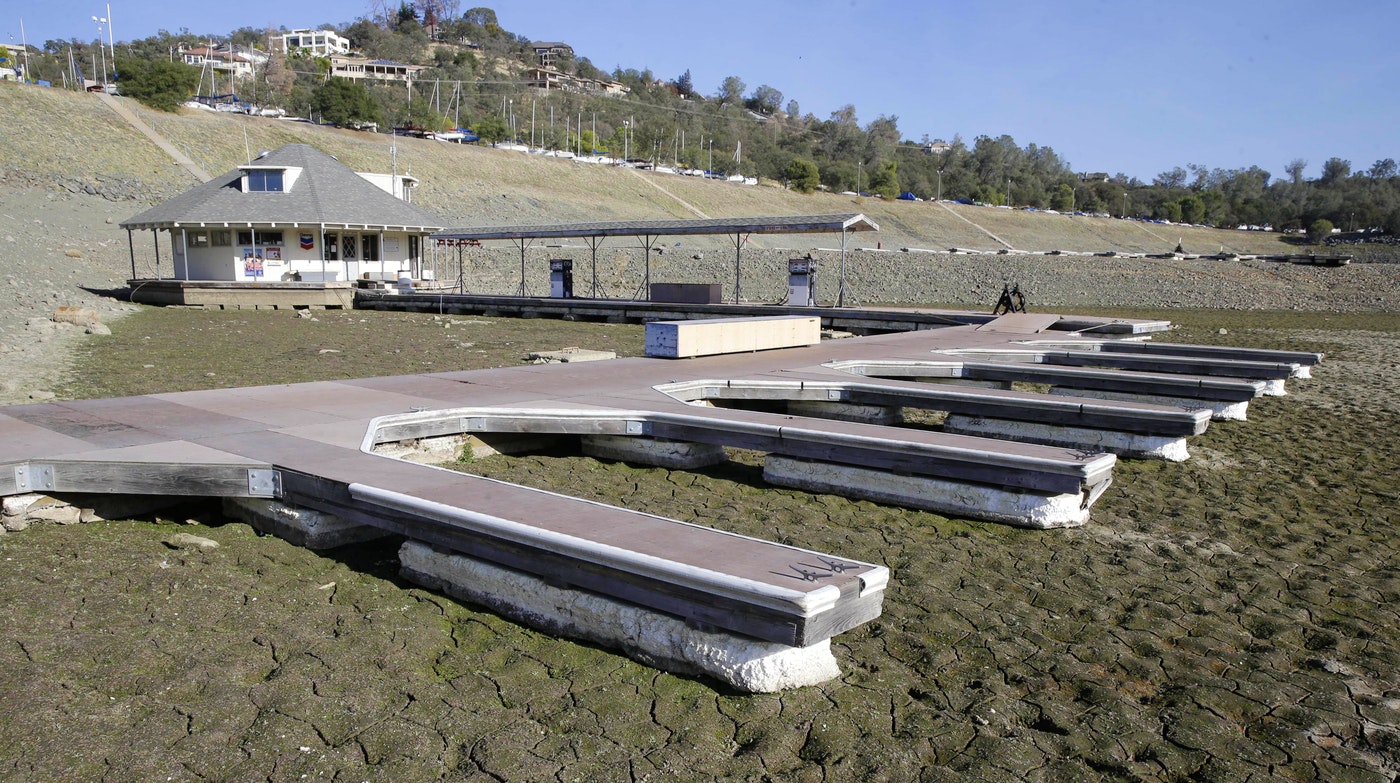Legislators will soon vote on whether to extend Senate Bill 32, the state’s Global Warming Solutions Act. Kirsten James of Ceres argues why passing the bill is crucial for water security.
By Kirsten James, Newsdeeply.com
SACRAMENTO – As every Californian knows by now, our state is in the fifth year of a drought, and this persistent imbalance of supply and demand in our water supply is likely the new norm. The good news is that many of our state leaders have woken up to this fact, and in recent years have been clearing some of the logjams around smart water management.
The state adopted a historic groundwater bill in 2014 to help ensure our reserves don’t run dry, and the legislature and voters passed a $7.5 billion water bond to help fund the infrastructure to make our state more resilient.
But arguably the most important water policy up for a vote this year is currently facing an uphill battle in Sacramento, and we all need to rally to ensure that it passes. That policy is the California Global Warming Solutions Act – Senate Bill 32 – which aims to extend the state’s impressive progress in curbing global warming pollution while building a stronger economy.
Surprised? What does SB 32 have to do with water? Well, a lot. The scientific evidence is conclusive – drought (and other climatic extremes) is exacerbated by climate change. Research released last year in a report on the economic risks of climate change called “Risky Business” concludes that California is on a path to “changes in the timing, amount and type of precipitation (that) will put the reliability of the state’s water supply at risk.” The “Risky Business” report also found that “climate-driven changes in water availability, quality and timing could have a significant impact on California’s agricultural economy.”

In this Nov. 17, 2014 file photo, boat slips sit on the dry lake bed at Brown’s Marina at Folsom Lake, near Folsom Calif. Global warming worsened record droughts in California. (Rich Pedroncelli, AP)
In line with this analysis, a key finding of a more recent Select Committee on Water Consumption and Alternative Sources reportis that “climate change trends suggest that all droughts in the future will be hot ones, increasing their severity and the need for water sources not reliant on snowpack.”
The “business as usual” scenario outlined in the “Risky Business” research also includes extreme sea-level rise, which will flood the water supply and delivery infrastructure. It identifies 28 wastewater treatment sites in California that could be inundated by seawater under current projections, including one of the world’s largest facilities, Hyperion, which treats up to 450 million gallons per day for the City of Los Angeles. Sea-level rise could also inundate groundwater supplies with saline water, making them unusable without treatment. Restoring these supplies and relocating wastewater plants would come with big dollar signs for cities and taxpayers.
If SB 32 fails and our progress on climate mitigation does not continue past 2020, California could face a future that more closely resembles the disaster film “The Day After Tomorrow” than the idyllic “Sunset Boulevard.”
Many California communities are already without water and looking to relocate water infrastructure projects. According to the Community Water Center, 296 small public water systems have been unable to provide adequate drinking supplies in recent years. Going without tap water and showers is a harsh reality for the residents affected.
Agricultural communities are obviously feeling the impact, too. Acreage under cultivation is down by nearly 1 million acres since the drought began and farmers who are still working their fields are often paying substantially more for their water.
Yet some lawmakers are not making the connection between climate legislation and the state’s long-term water security. In a recent meeting here, one state legislator noted that he was leaning against Senate Bill 32 primarily because he felt his district wasn’t getting a big enough piece of the funding pot for clean energy programs created under the state’s current climate law. What he wasn’t thinking about is the vast farm acreage being fallowed in his district due to climate change – an impact that is surely larger. Our state leaders need to look at the whole picture.
And that whole picture includes a robust economy. SB 32 would continue current programs to limit global warming pollution that have helped California build an advanced energy economy while adding 500,000 jobs. We need SB 32 to provide certainty that this progress and economic growth will continue.
California cannot solve climate change on its own, but its forward-thinking policies set an example that other states and countries can emulate. If SB 32 fails, there may be a domino effect globally that will jeopardize the planet and the economy alike.
We cannot let that happen. All of us who work on water issues and are concerned about the drought and water scarcity must come together on this critical piece of legislation and ensure a brighter future for California and the world.
The views expressed in this article belong to the author and do not necessarily reflect the editorial policy of Water Deeply.
Kirsten James oversees the California policy program at Ceres, a nonprofit sustainability advocacy organization. Ceres also directs Connect the Drops, a network of California businesses seeking smart policies and solutions to ensure a sustainable water future in California.


 (909) 335-8100 ·
(909) 335-8100 ·  (909) 335-6777
(909) 335-6777 Email:
Email: